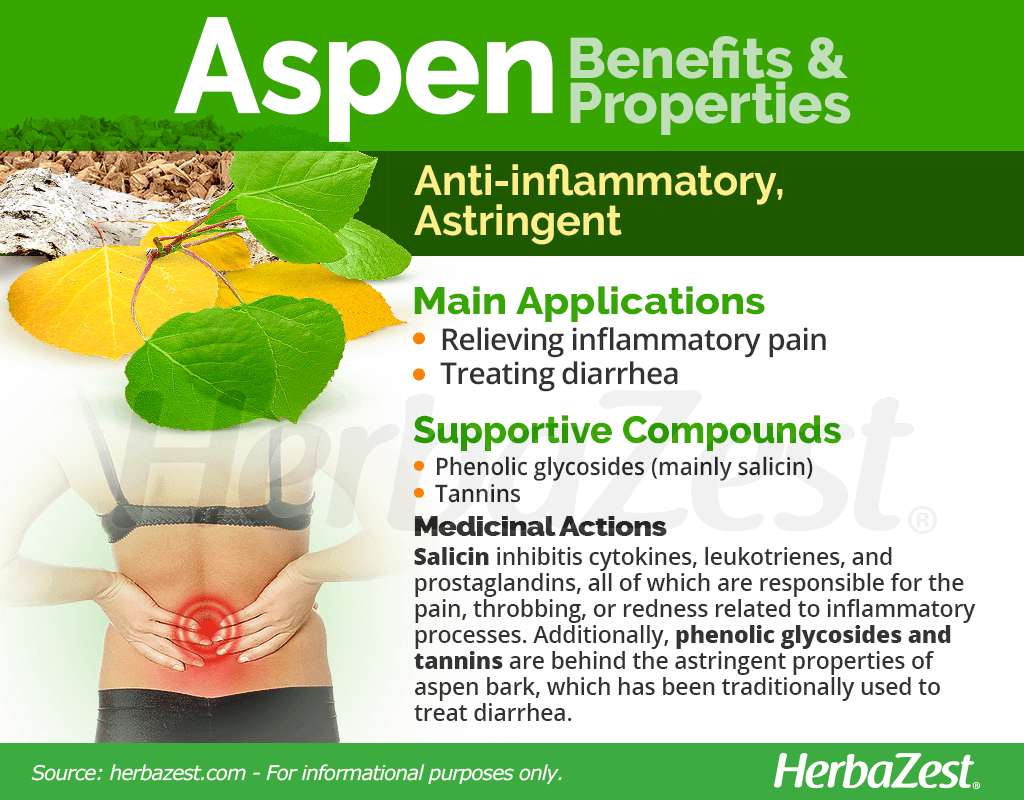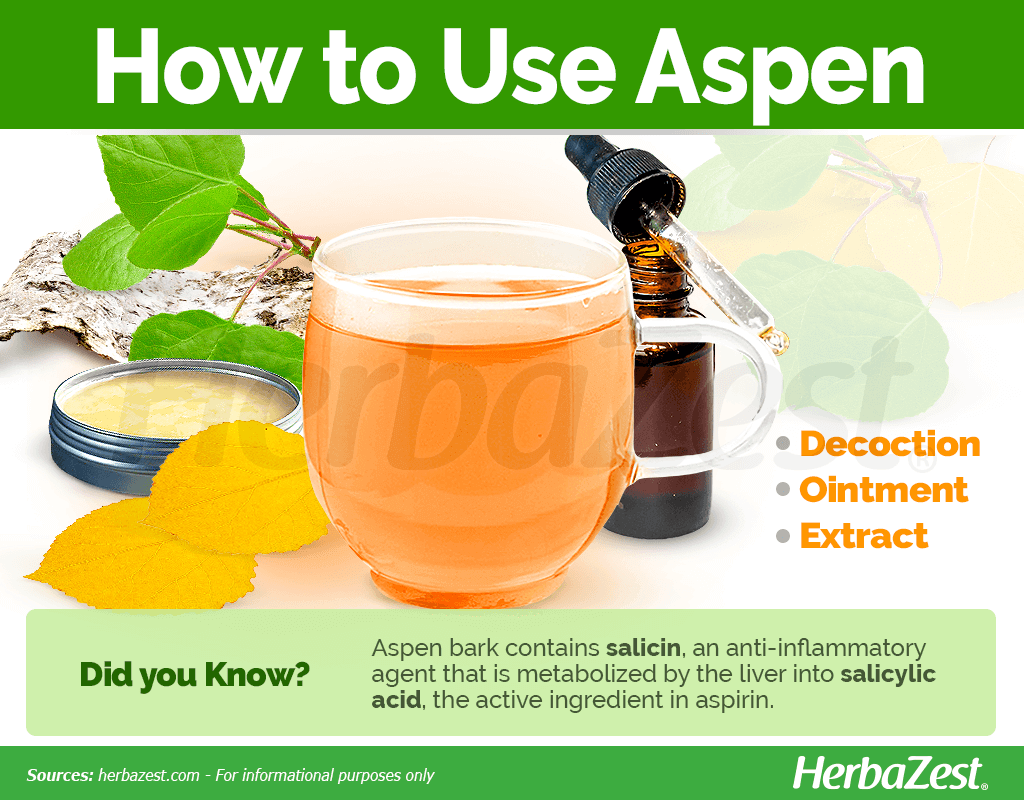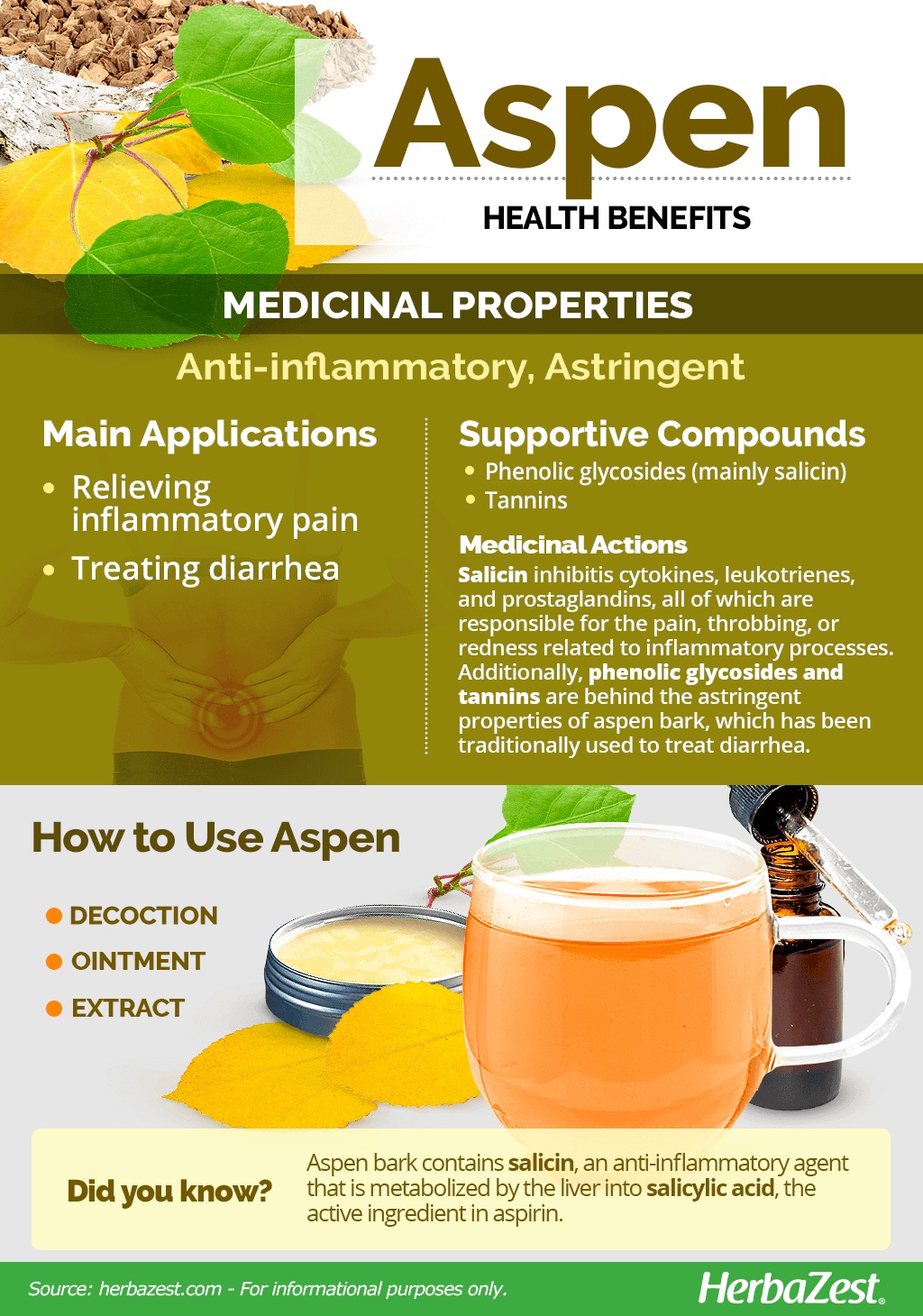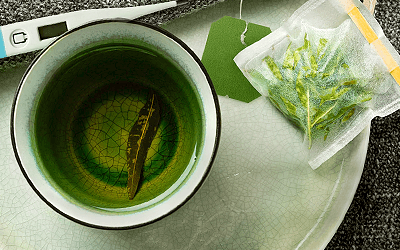The aspen tree, also commonly called American aspen, quaking aspen, or trembling aspen, is the most widely distributed species of poplar trees in North America. Besides being a popular source of timber, aspen has been traditionally used by native populations for medicinal purposes, mainly for treating rheumatoid arthritis, cystitis, diarrhea, and even the common cold.
Aspen Medicinal Properties
Health Benefits of Aspen
Aspen properties include anti-inflammatory, astringent, and antiseptic actions, which have been traditionally used for:
Relieving inflammatory pain. Aspen has been traditionally used for treating headaches, as well as arthritic and rheumatic pains.
Treating diarrhea. The astringent and antiseptic qualities of aspen make it useful for the treatment of diarrhea and the symptoms of irritable bowel syndrome (IBS).
Additional health benefits of aspen include alleviating chronic skin conditions, like eczema or acne, relieving fever, speeding up frostbite healing, and treating urinary tract infections.
How It Works
The most important compound in aspen is salicin, a type of phenolic glycoside with anti-inflammatory and antiseptic actions. Salicin inhibits three molecules produced by the body in response to tissue damage and infection, namely cytokines, leukotrienes, and prostaglandins, all of which are responsible for the pain, throbbing, or redness related to inflammatory processes.
Aspen's phenolic glycosides and tannins are meant to protect the tree, since both chemicals are toxic to a number of pathogens, insects, and animals; however these compounds are also responsible for the astringent properties of aspen's bark and leaves, which have been traditionally used for treating diarrhea.
Salicin is metabolized by the liver into salicylic acid, the active ingredient in aspirin.
Herbs like devil's claw and turmeric also possess anti-inflammatory properties, whereas goldenseal and raspberry are effective for treating diarrhea.
Aspen Cautions
Those with an allergy to aspirin must avoid aspen preparations.
- Medicinal action Anti-inflammatory, Astringent
- Key constituents Phenolic glycosides (mainly salicin) and tannins
- Ways to use Decoctions, Ointment
- Medicinal rating (2) Minorly useful plant
- Safety ranking Use with caution

How to Consume Aspen
The bark of the aspen tree is used medicinally thanks to its salicin content, similar to willow. On occasion, the leaves may be combined with the bark. Aspen preparations are homemade, so they are not standardized.
Natural Forms
Decoction. One to four grams of aspen's bark are boiled to obtain a concentrated liquid that can be taken to relieve joint pain and fever, as well as for stopping diarrhea. Because of the antiseptic, astringent properties of aspen, this preparation can also be applied topically, for the treatment of acne, eczema, and other skin conditions.
Herbal Remedies & Supplements
Ointment. Aspen's bark is infused into bee wax or paraffin to obtain a preparation that can be applied over sunburns, bug bites, and superficial wounds, as well as on skin areas affected by acne or eczema. The tree's buds are often added to the mixture to thicken it.

Growing
Growing aspens can be tricky in a home garden, because their extensive root system requires a lot of room to grow and branch out. Poplars are timber species, more appropriate for temperate climates, and for reforestation purposes.
Aspen is considered to be a nurse tree, as it encourages the growth of others species of trees around it, which can replace the trembling aspen when it dies.
Growing Guidelines
Aspens can't be propagated by cuttings and they rather spread laterally through suckers, which become dense and invade large areas. Open spaces are ideal for aspen groves.
Aspens require plenty of sunlight.
Aspen prefers damp and moist areas, as well as cool, temperate climates.
They adapt to many different environments and altitudes, but are sensitive to extreme heat.
- Life cycle Perennial
- Harvested parts Bark
- Light requirements Full sun
- Growing habitat Cool temperate regions
Additional Information
Plant Biology
Aspen is a deciduous tree that can grow up to 40 - 100 feet (12 - 30 m) in height. Aspen groves are unique because they consist of one huge organism, not individual trees. Quaking aspens can be found in nearly every state of the United States and most Canadian provinces.
Aspens are characterized by their smooth, white bark with black scars where lower branches have naturally self-pruned. Leaves are small and oval, almost heart-shaped, and are attached by long stalks called petioles. The long petioles allow the leaves to quiver in the wind, giving them their common name. The leaves change from green to golden and sometimes bright red in the fall.
Classification
Aspen (Populus tremuloides), is a member of the Salicaceae or willow family, which it is thought to comprise 350-500 species distributed across two genera of great economical importance: Populus (poplars) and Salix (willows). The classification of these species is quite difficult for botanists due to their many similarities, and even their place within the Salicaceae family has been questioned.
Related Species and Varieties of Aspen
The genus Populus or poplar comprises around 40 species of deciduous trees around the world; however, two main species are widely distributed across North America: balsam poplar (P. balsamifera) and trembling aspen (P. tremuloides). Other important species in the genus are P. deltoides and P. trichocarpa.
According to the United States Department of Agriculture (USDA), extensive genetic and morphological variations exist within the range of the aspen tree. A number of subspecies and varieties have been described, but none are currently recognized.
Historical Information
Poplar trees have been known in Europe since the dawn of human civilization, when they grew naturally along rivers and open spaces not meant for agricultural development.
Likewise, Native Americans have been using aspen trees for shelter and medicinal purposes long before the arrival of Europeans into the New World. The Chippewa would chew the aspen bark or root and apply it as a poultice in order to heal wounds and prevent infections.
Toward the end of the 17th century, "Canadian" poplars were imported from France and propagated in the vicinity of Turin, Italy, where their rapid growth fascinated the local plant-breeders. It wasn't until the 19th century though, that American poplars really conquered the rest of the world, since paper manufacturers began to use aspen wood to produce pulp.
During the first decade of the 19th century the covers of school books were labeled as made of "Canadian poplars."
The first attempt to use the active compounds of a willow bark to successfully treat malaria was carried out by Edward Stone in 1763. Since then, the analgesic, anti-inflammatory salicilates of both Populus and Salix species have been widely used by the pharmaceutical industry. Even today, the aspirin-like effect of the aspen bark, without the usual stomach irritation caused by commercial drugs, is still valued by herbalists and pharmaceutical companies as well.
Economic Data
Aspens are widely used in the timber industry to make pallets, crates, paper, pulpwood, and playgrounds. It is highly valuable for shipping purposes (i.e., crates, boxes, packing) because of its light weight and strength. It is widely preferred for making playgrounds because it does not splinter easily.
In 2012, global industrial aspen production amounted to 1.7 billion cubic meters, with the United States and Canada leading production. The same year, the U.S. was by far the largest producer in the world, with 321 million cubic meters.
Popular Beliefs
According to Greek mythology, the poplar or aspen three was sacred to Hercules because when bitten by a snake he found a remedy for the poison in its leaves.
In Sicily it is customary on solstice eve to cut down the tallest poplar and drag it through the village while shouting and beating a drum, while a crowd dances and sings around the tree.
The name aspen comes from the greek aspis, which is translated as "shield." In fact, the strong and lightweight wood of the aspen tree was commonly used for making war shields, which were believed to be imbued with protective powers. The Celtic tradition adopted this magical belief to the extend that rowan (aspen for the Celts) was a popular choice of tree to plant close to a dwelling; buried treasures were also said to be protected by aspens.
During the Victorian era aspen trees symbolized lamentation and fear.
Other Uses
Timber. Aspen wood is lightweight and strong, so it is popular for making shipping boxes, plywood, and furniture.
Paper. Aspen's strong pulp is inexpensive, easy to peel, and it bleaches well, so it is a popular choice for paper production.
Food Industry. The benzoic acid in aspen leaves is used to preserve foods.
Pharmaceutical industry. Because of its analgesic, aspirin-like properties, extracts of aspen are used in the production of pharmaceutical products.
Fungicide. Aspen buds contain p-hydroxybenzoic acid, which is used in the production of fungicides.
Dye. The catechol from the bark has commercial applications in photography and dyeing.
Personal care. Aspen bark extract is also an ingredient in cosmetics.
Additional uses for aspen include animal bedding, fence posts, siding, and shavings to pack produce.
- Other uses Paper, Cosmetics, Timber
Sources
- Central Yukon Species Inventory Project (CYSIP), Salicaceae : Willow Family | Populus tremuloides : Trembling Aspen
- Dan Medicinhist Arbog, From willow bark to acetylsalicylic acid, 2009
- Medicinal Herb Handbook, pp. 6, 28
- Poplars and Willows in Wood Production and Land Use, p. 8
- Poplars and Willows: Trees for Society and the Environment, p. 580
- Reforest London, Trembling Aspen
- San Francisco State University Department of Geography and Environment, Biogeography of Quaking Aspen (Populus tremuloides)
- Trees for Life, Aspen
- Encyclopedia of Herbal Medicine, p. 255
- FAOSTAT, Aspen report
- Medicinal Plants of the World, p. 252
- The Herbal Handbook
- U.S. National Park Service Plant Guides, Quaking Aspen






